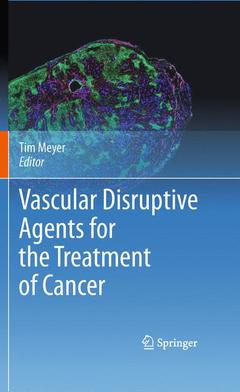Vascular Disruptive Agents for the Treatment of Cancer, 2010
Coordonnateur : Meyer Tim

This book discusses preclinical target identification and validation, and the optimum pre-clinical animal models
Biomarkers and imaging modalities used to assess the efficacy of these agents are examined
A review of the clinical development of key drugs is provided
Recent research exploring rational combinations of VDAs with other agents is reviewed and the potential place of VDAs in the future of cancer therapy is critically appraised
Includes supplementary material: sn.pub/extras
Date de parution : 11-2014
Ouvrage de 256 p.
15.5x23.5 cm
Disponible chez l'éditeur (délai d'approvisionnement : 15 jours).
Prix indicatif 158,24 €
Ajouter au panierDate de parution : 09-2010
Ouvrage de 256 p.
15.5x23.5 cm
Disponible chez l'éditeur (délai d'approvisionnement : 15 jours).
Prix indicatif 158,24 €
Ajouter au panier


